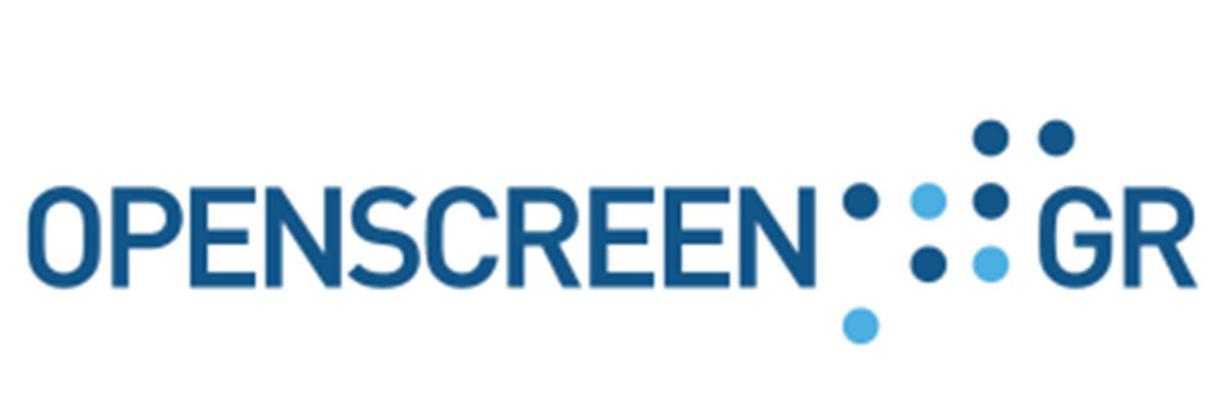National Centre of Scientific Research “Demokritos”
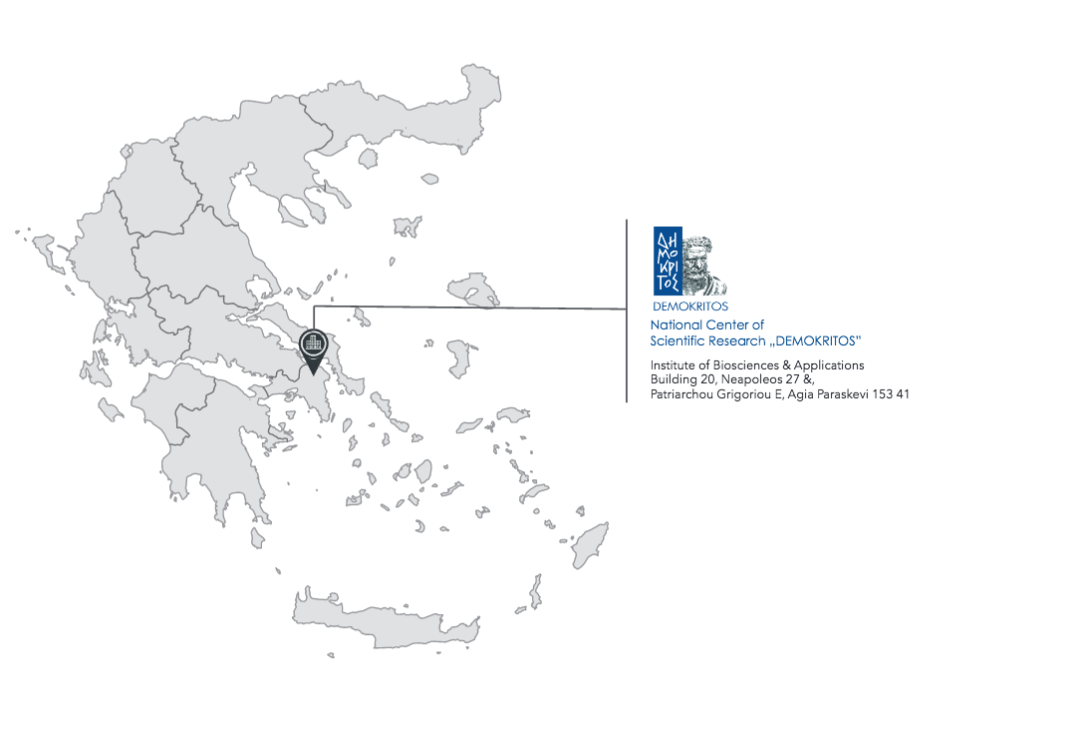
The INSTITUTE OF BIOSCIENCES AND APPLICATIONS (IBA), the coordination center of OPENSCREEN-GR, aims to conduct a high level of basic and applied research in life sciences and research results’ evaluation and analysis. It focuses on: i) the regulation of cellular functions and molecular mechanisms in physiological and pathological conditions, ii) the environment and biotechnology, iii) structural and computational biology, as well as areas related to the above fields.
IBA emphasizes the promotion of excellence and innovation and aims to: i) new knowledge, ii) development and evaluation of bioactive compounds, products and innovative technologies for the prevention, diagnosis and treatment of diseases, as well as biotechnological applications related to health, environment and agri-food, iii) education and training, iv) sharing of scientific knowledge in society and v) offer of specialized research and technological services and products as well as in the transfer of know-how to public and private sectors
Services

High Performance Photometric Assays
Multi-parametric spectrophotometer suitable for rapid screening techniques by measuring absorption, fluorescence and chemilluminescence
Equipment
Tecan Spark™
Characteristics
- ELISA analysis
- Dispenser
- Temperature and humidity control
- Incubator (CO2 / O2 integrated units)
- Automated microscope
- Cytometer
- Absorption
- Fluorescence
- Luminescence
- High speed Monochromator, High speed Monochromator (HSM)
- Spectrum: 200nm – 1000nm
- DNA – RNA qualitative analysis analysis (206/280)
Applications
- Quantification of nucleic acid (absorption)
- Quantification of nucleic acid (fluorescence)
- Cell fluorescence
- Luminescence measurement
- Cell incubation
- High-throughput screening up to 50×384 wells per measurement
- Imaging (cell imagining)
- Measurement (cell counting)
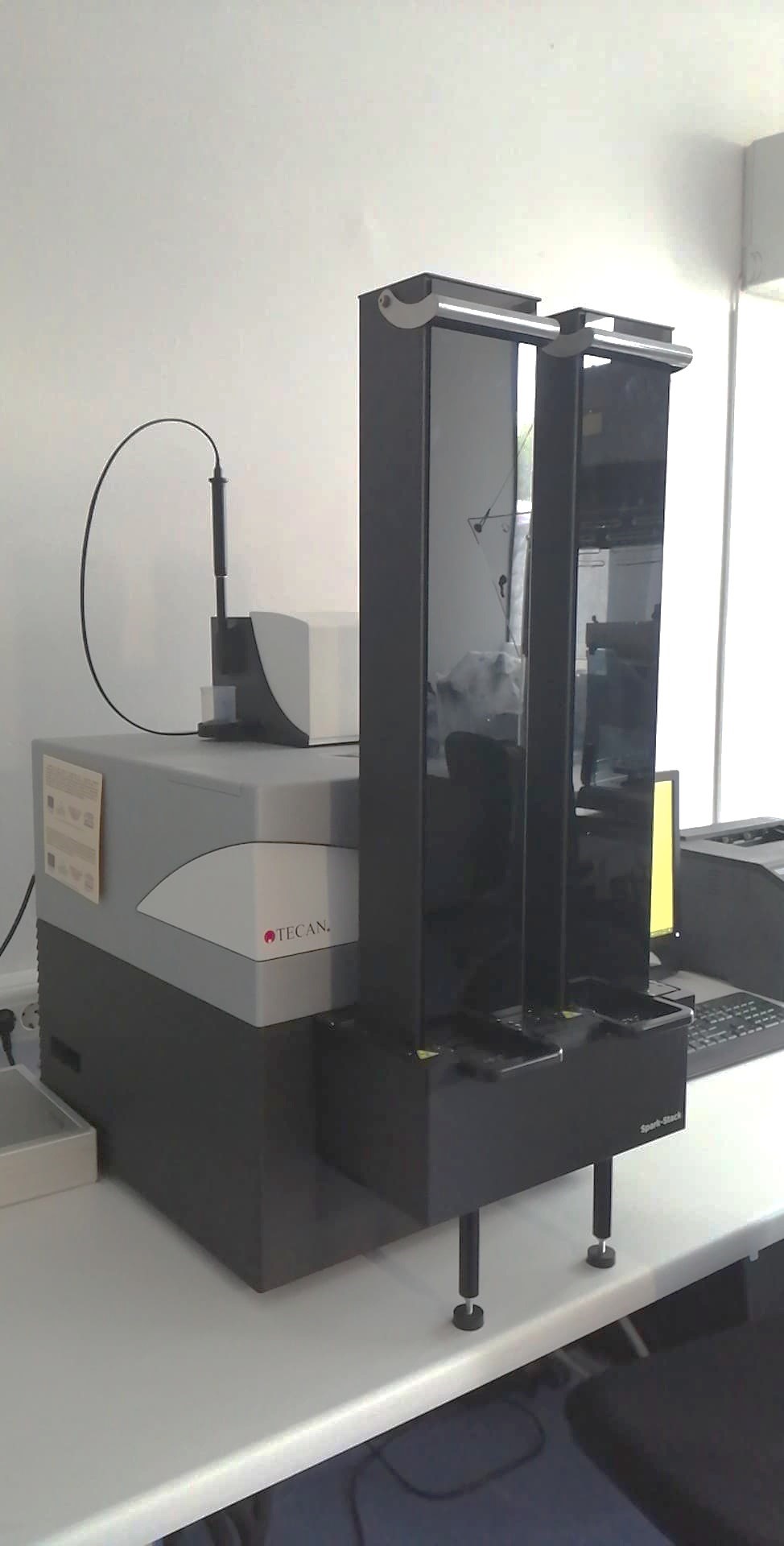
Multiplex Analysis
A technology based on microbead flow cytometry and analyzes hydrodynamic, optical and digital data allowing multiple simultaneous analysis of targets per sample or well.
Equipment
Luminex MagPix™
Characteristics
- Multiplexing: Up to 50 analyzers per sample
- Sensitivity: About 100 copies of DNA or pg protein
- Reading time: Plate 96 wells in ≤60 minutes
Applications
- Coupling protein
- Immunoassays
- Serology techniques
- Nucleic Acids
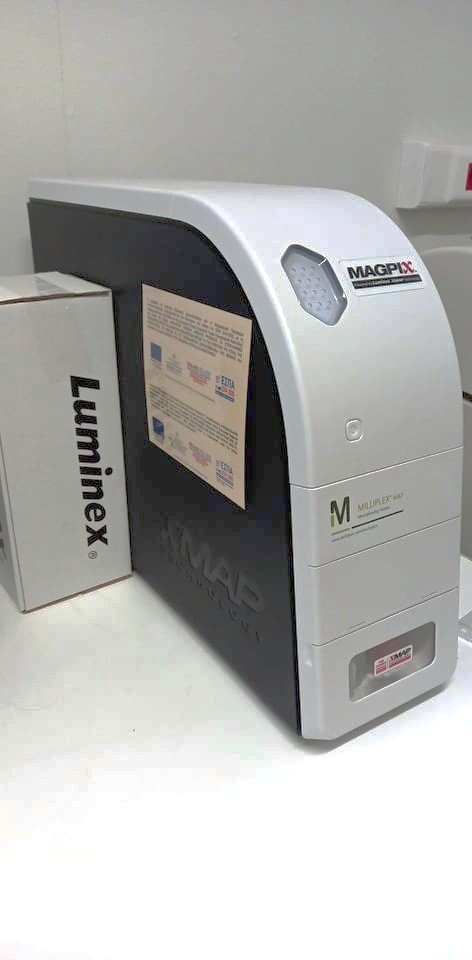
Flow Cytometry
Equipment
BD FACSCalibur™
Characteristics
- Two lasers
- Fluorescent detectors and filters
- Up to four high-performance, high-dynamic range amplifiers with filters: 530 nm (FITC), 585 nm (PE / PI), and> 670 nm (PerCP), and 661 nm (APC) – FL4 option
Applications
- Cell cycle analysis and detection of cell apoptosis
- Bacterial studies
- Extracellular markers
- Intracellular staining
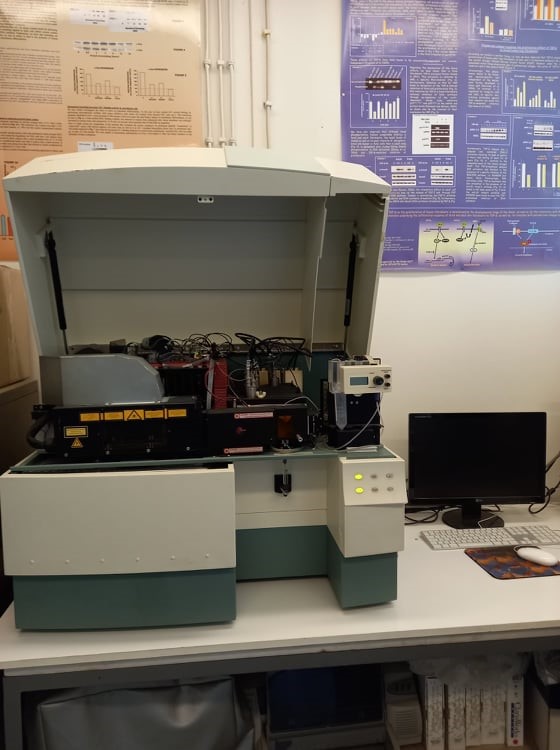
Robotic Microplate Handling System
Equipment
Freedom EVO75™, TECAN
Characteristics
Freedom EVO75 robotic system undertakes the repetitive fluid handling required in a high-performance experimental protocol with large number of wells or with multiple compounds.
Applications
- Accurate dilutions
- Limiting dilutions
- Equal distributions
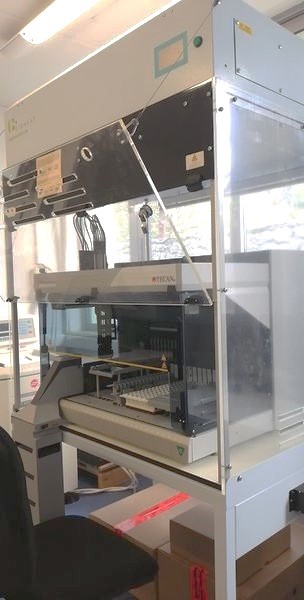

Optical Microscopy
The Optical Microscopy Unit of the Institute of Biosciences and Applications (IBA) of NCSR “Demokritos” offers state-of-the-art equipment, which serves imaging needs of the research laboratories of the Institute as well as hospitals and universities
Equipment:
Leica TCS SP8 MP
A multi-photon confocal microscope with a fully automated motor bank. The system is accompanied by a incubator chamber for the strict control of all environmental conditions (humidity, temperature, CO2, O2, N2). Multi-image / confocal microscopy system (Leica SP8 in inverted DMi8, equipped with PMT and two hybrid detectors, three AOTF-regulated laser sources, a Mai Tai eHP Deep See laser and climate chamber)
BioRad MRC 1024
Confocal microscope equipped with a Nikon E600 upright optical microscope (3 color detection).
Applications:
This unit covers a wide range of optical microscopy applications, such as:
- Multi-channel Fluorescence Microscopy, covering the ultraviolet, visible spectrum and infrared
- Multicolor 3D Imaging
- Live cell imaging Two-photon confocal microscopy
- Second Harmonic Generation imaging protocols
- Förster [Förster / Fluorescence Resonance Energy Transfer (FRET)] protocols for monitoring molecular interactions in living and permanent cells
- Photofluorescence Fluorescence Recovery Protocols (FRAP) Co-location analysis in live and fixed cells
- Calcium ion imaging (Calcium imaging)
- Spectral Unmixing Differential Contrast Contrast Microscopy (DIC) (known as Nomarski Microscopy)
- Image processing and analysis (with specialized software such as ImageJ / Fiji and Imaris (Bitplane)
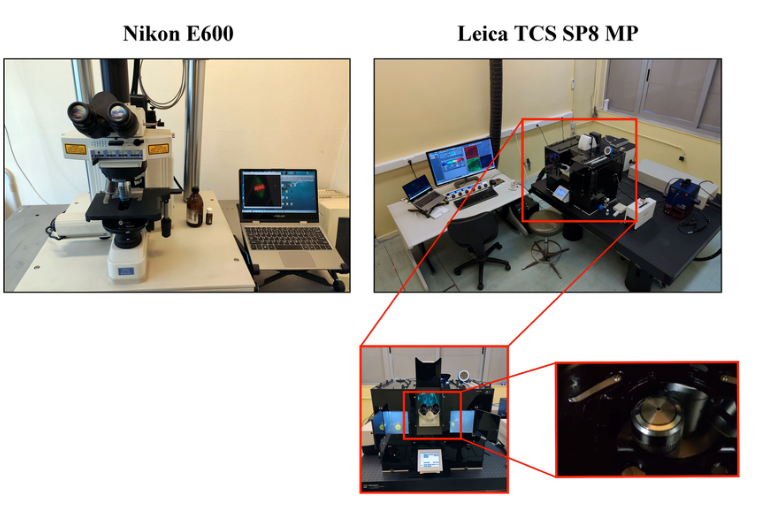

Circular Dichroism (CD)
The goal of the CD lab is to perform CD experiments on liquid samples. The CD method is highly accurate, sensitive, reproducible, and non-destructive to the sample.
Equipment:
J-715 JASCO and Peltier system
Applications:
- Conformational analysis of biological macromolecules (e.g. proteins)
- Investigating the influence of denaturants, solvents and ligands on conformation and stability of macromolecules
- Monitoring conformational changes under different conditions/thermal stability studies
- Investigating protein-protein interactions as well as interactions/complexation of proteins with various ligands, metals, stabilizers, inhibitors, drugs, etc.
- Studying Interactions/complexation of nucleic acids
- Comparative structure and stability studies of proteins and their mutants
- Distinction of the absolute configuration of optically active compounds and quantitative analysis of enantiomeric mixtures

Nuclear Magnetic Resonance
Equipment A
The Nuclear Magnetic Resonance Laboratory at NCSR “Demokritos” (NMR Lab, https://inn.demokritos.gr/nmr-lab/) comprises two spectrometers for liquid samples, the 500 MHz Bruker Avance DRX and 250 MHz Bruker Avance III, with multinuclear probes and full equipment for the execution of all 1D and 2D NMR experiments in the Bruker library.
Characteristics
NMR spectroscopy is an analytical method based on the magnetic properties of the nuclei of atoms. It is unique for the structural and conformational characterization of molecules in solution at atomic resolution. Furthermore, NMR spectroscopy is widely used in the study of kinetic and dynamic phenomena, transformations, interactions, equilibria, as well as in purity assessment, mixture analysis, metabolomics studies, etc.
Applications
NMR spectroscopy finds applications in a wide range of activities that require structural information in solution (academic institutions, private companies of the pharmaceutical, chemical and food sectors, national laboratories, etc.)
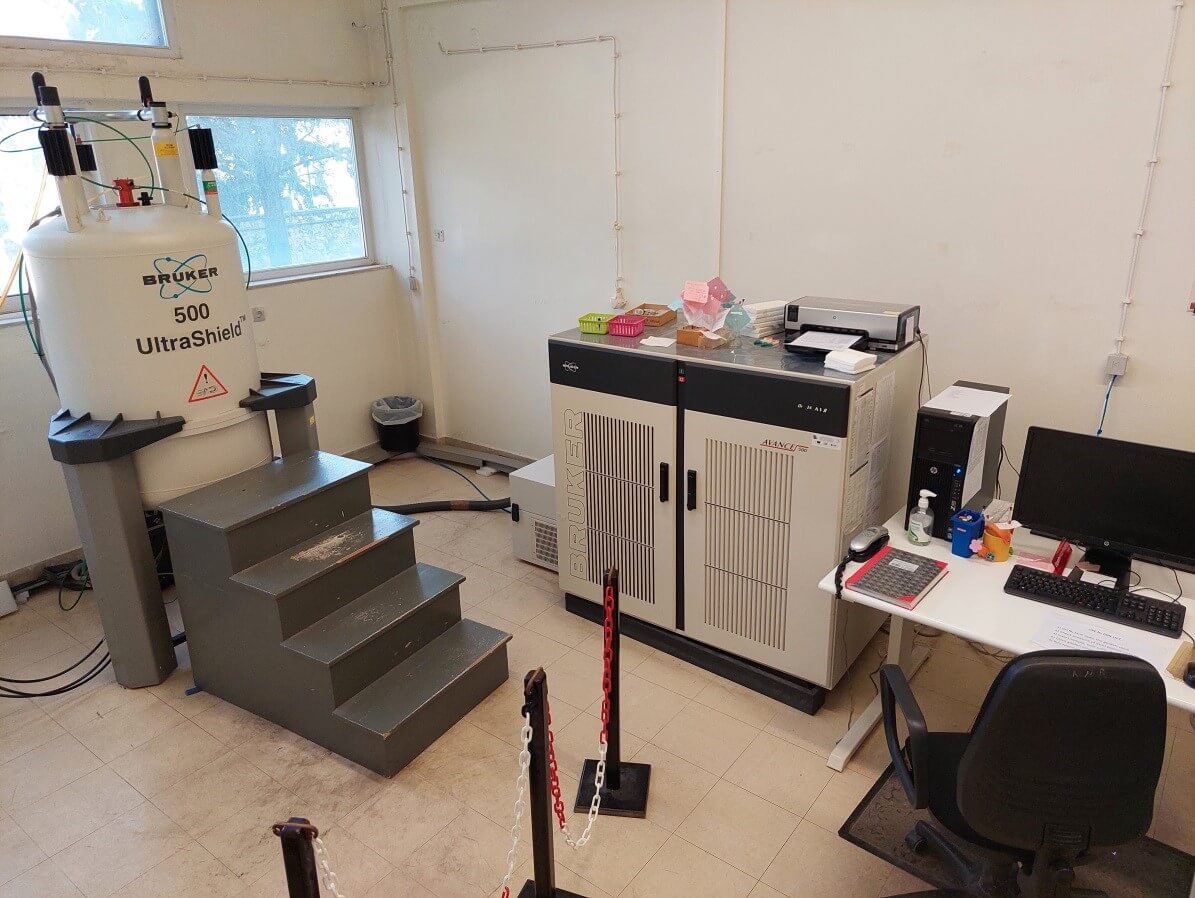

Real Time PCR
Equipment:
Agilent Mx 3000P and a Roche LightCycler® 96

Cell Culture Facilities
ΙΒA offers multiple cell culture facilities for:
– Mammalian cell cultures,
– Insect cell cultures
– Fungal cultures
– Plant growth
IBA’s infrastructure encompasses 10 CO2 incubators for mammalian cell cultures, 4 incubators for bacterial cell cultures, 2 incubators for insect cell cultures and a Conviron incubator for silkworm maintenance (regulation of light and temperature), 3 for fungal cultures and 2 for plant growth, 10 laminar-flow cabinets, a Ruskinn InVivo400 hypoxia workstation, one Coulter Z1 particle counter, and 10 liquid nitrogen containers with capacity for over 10,000 samples.
Beyond cell cultures, also insect rearing units (including CT room) exist, along with wind tunnel for studies of insect behavior under the effect of various chemical stimuli. Users may have access to an extensive cell bank comprising fibroblasts, osteoblasts, chondrocytes, intervertebral disc cells, mesenchymal stem cells, as well as, many cancer cell lines.
Applications :
– Biobank of cell lines
– Isolation and culture of primary cells and cell lines
– Co-cultures and 3D cell systems
– Studies of cytotoxicity, cell death, cell proliferation, estrogenic activity, oxidative stress
– Studies of stress-induced cell senescence
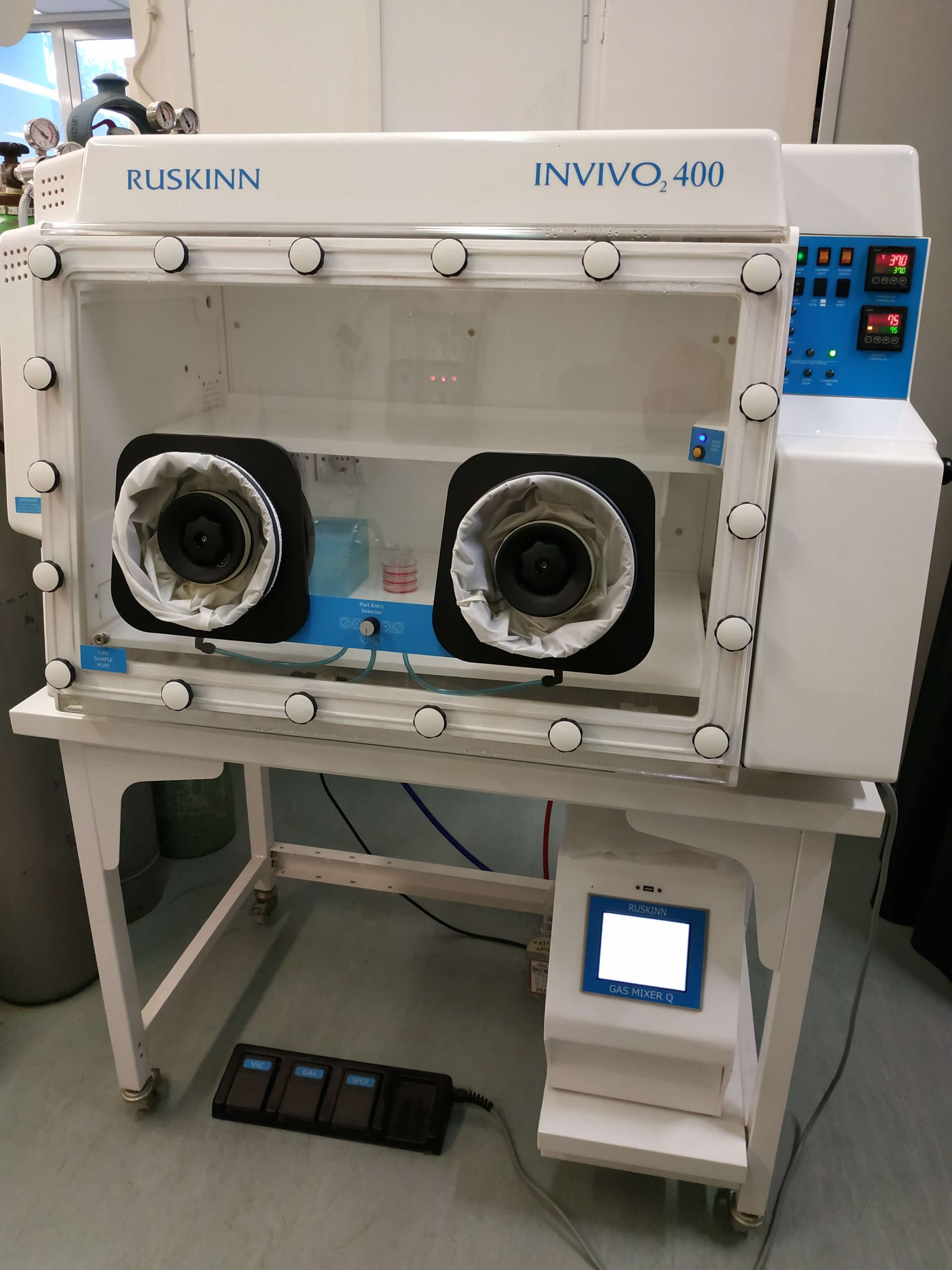
A number of insect colonies, major pests of crops of significant economic value are maintained.
Applications
Insects originating from the established insect colonies are used for the determination and evaluation of the biological activity of semiochemicals under laboratory conditions prior to their testing under field conditions in biological pest control methods such as mass trapping, mating disruption, attract and kill etc.

Animal House Facilities
The Animal House of the Institute of Biosciences and Applications of the National Centre for Scientific Research «Demokritos” is one of the first organized and specialized Laboratories for the breeding and disposal of small laboratory animals in Greece. Currently, the aim of the Animal House is the supply of small laboratory animals to be used in experimentation in basic science, in the development of therapeutic regimes and new technologies, as well as in educational purposes. Today, the Animal House functions in compliance with the national and international standards and covers the most recent demands for research conducted on animal models.
Applications
Reproduction, Disposal and Experimentation units in laboratory animals are active in its facilities. The Research Protocol Evaluation Committee, the Animal Welfare Monitoring and Opinion Committee, its continuously trained staff, the modern logistics and building infrastructure, the Quality Management System ISO 9001: 2015, the monitoring, prevention, diagnosis and treatment program animal health and care control and the organization of training seminars are a guarantee for the quality of its services.
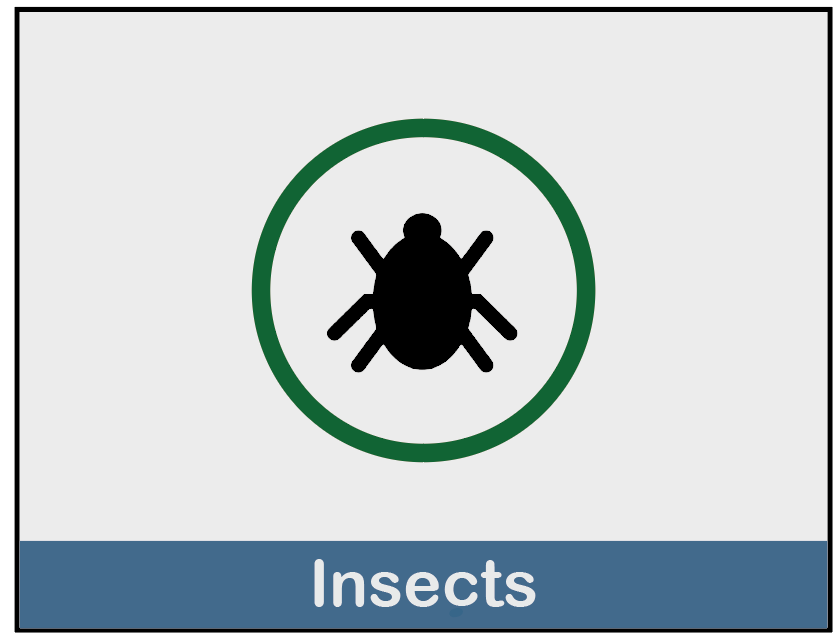
GC-EAD
Electroantennography (EAG), Electroantennographic Detection (GC-EAD)
Electroantennography or EAG is an electrophysiological technique for measuring the average neural activity of an insect antenna for a given odor and thus provide information on the olfactory perception (of the insect). The technique is widely applied as a screening process to reduce the number of volatiles tested to identify promising bioactive components.
Coupled gas chromatography – electroantennographic detection GC-EAD.
It is an analytical procedure that permits the rapid identification of compounds in complex mixtures that stimulate the olfactory sensilla of an insect. In other words, it can tell you what specific chemicals an insect can smell (and, to some degree, ones it can’t), and it can use odors derived directly from natural sources. This information can be used to discover potentially useful compounds—such as sex pheromones—that alter the behavior of insects.
Equipment
Gas Chromatogramm: Agilent7890B
Biophysical Instrumentation: EAG, SSR (Single Sensillum Recording) and GC-EAD, Ockenfels SYNTECH GmbH
Gas Chromatogramm: Agilent7890B
EAG software: EAG and GC/EAD SIGNAL RECORDING and ANALYSIS PROGRAM
GC-EAD software: AUTOSPIKE software
Characteristics
Electroantennography (EAG) is a bioassay widely used in experimental entomology for the detection of volatiles perceived by the antennal olfactory apparatus of insects. It records the small voltage fluctuations between the tip and base of an insect antenna during stimulation with a given odorant. The amplitude of an EAG response increases with increasing stimulus concentrations until a saturation level is reached. The amplitude is further dependent on the nature of the stimulus, the insect species, its sex, and many less well-defined factors. EAG should be considered an empirical method, which offers practical value, but provides no fundamental data on the physiology of insect olfactory receptors mechanisms (Chemical Ecology and Natural Products Laboratory).
Applications
The EAG method can be used for many purposes like screening biologically active compounds, identification of active fractions, selection of active synthetic compounds, concentration measurements in the field, and as a detector in gas chromatography.
Assessment of biological activity of secondary metabolites of insect, plant, and microbial origin having an effect on the physiology or the behavior of insects (behavior modifying agents – infochemicals), which may be used in integrated pest management programs to control populations of insect pests of agricultural/rural, urban or medical interest.
Determination of semiochemicals (infochemicals) and other biologically active metabolites (Biological Control Agents, BCAs) to be uses as “clever” insecticides.

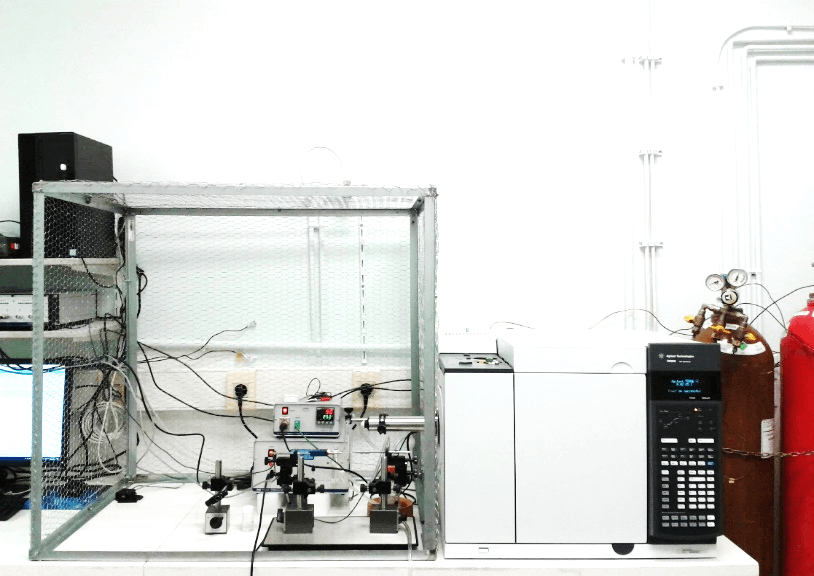
Bioassays Facilities - Olfactometers
Chemical Ecology and Natural Products Laboratory is equipped with Olfactometers which are used for bioassaying olfactory stimuli. They are widely used in the research of insect pheromone and the research of plant volatiles such as kairomones and synomones.
Depending of the insect species and the compound(s) under study the following types of olfactometers may be used:
Wind Tunnel

Y-type Olfactometer
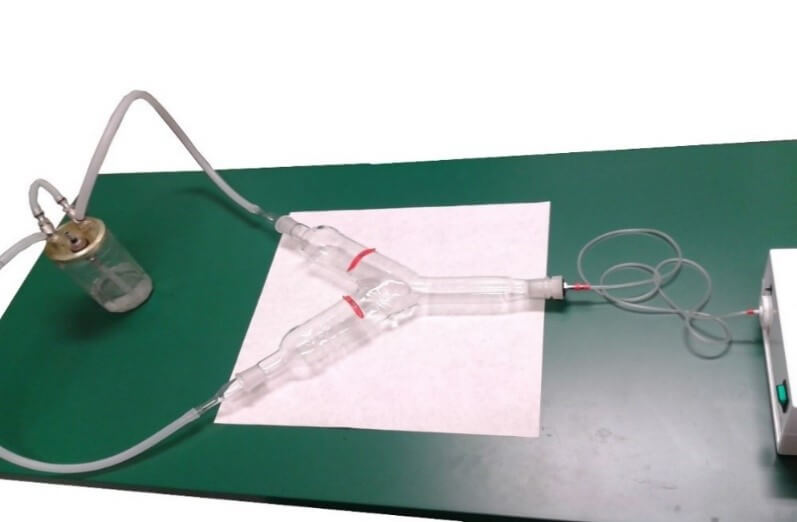
Arena olfactometer
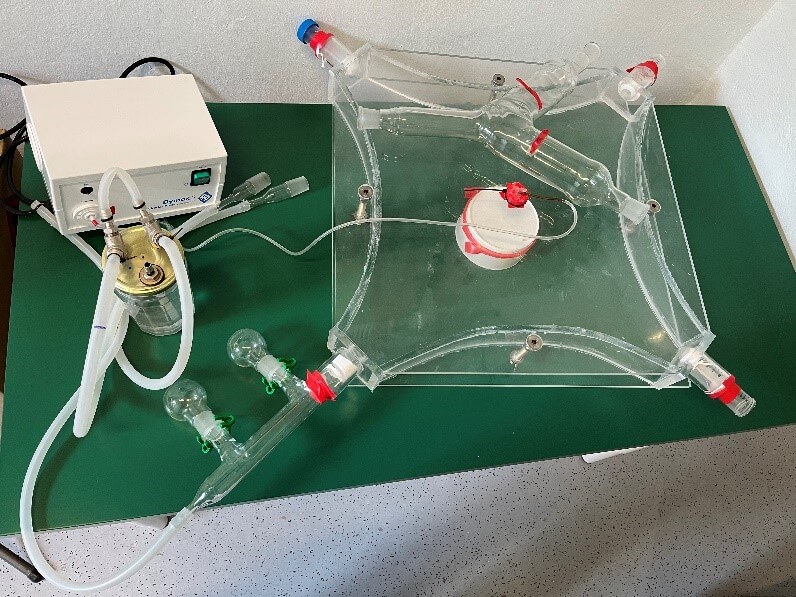
Microplate Reader
Equipment
Automatic microplate photometer TECAN InfiniTE M-200 that can be used for luminescence fluorescence and absorbance measurements.
Characteristics
The Infinite M-200 is a monochromator-based instrument and can be used for:
- Fluorescence intensity and time resolved fluorescence
- Absorbance with injectors or cuvette
- Glow and flash luminescence
Applications
- Cell-based reporter assays (fluorescence and luminescence)
- Growth of cell lines (absorbance)
- 6-well, 24-well, 96-well plate format
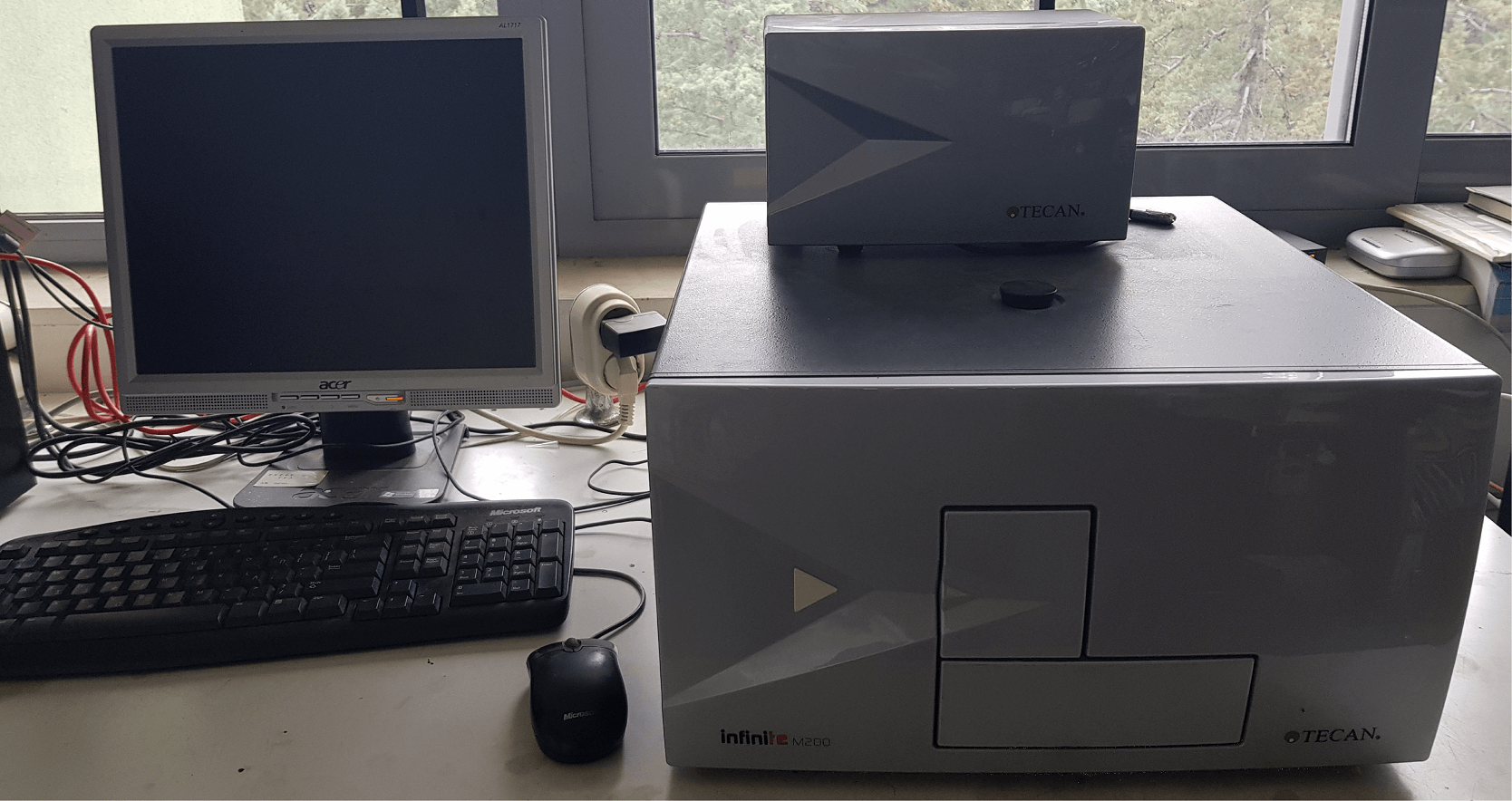

Recombinant Protein Production
IΒA offers facilities for recombinant protein production using bacterial, insect and mammalian expression systems and for protein purification.
Equipment
- Refrigerated incubators for protein expression in bacteria or insect cells
- CO2 incubators for protein expression in mammalian cells
- AKTA Purifier FPLC System
Characteristics
AKTAFPLC
- Flow-rate range:05–20 ml/min
- Pressure range: 0–5 MPa (50 bar, 725 psi)
- Wavelength selection: 254, 280, 313, 405, 436, 546 nm (with Hg lamp)
- Conductivity range: 1 μS/cm–999.9 mS/cm
- pH range: 0–14
- Solvent compatibility: All solvents and buffers commonly used in chromatography of biomolecules
- Additional sample pump
Applications
Produced recombinant proteins can be used in:
- screening small-molecules that affect enzymatic activities leading to change in color, fluorescence, pH
- screening of drug-protein binding
- screening small-molecules for protein conformational changes
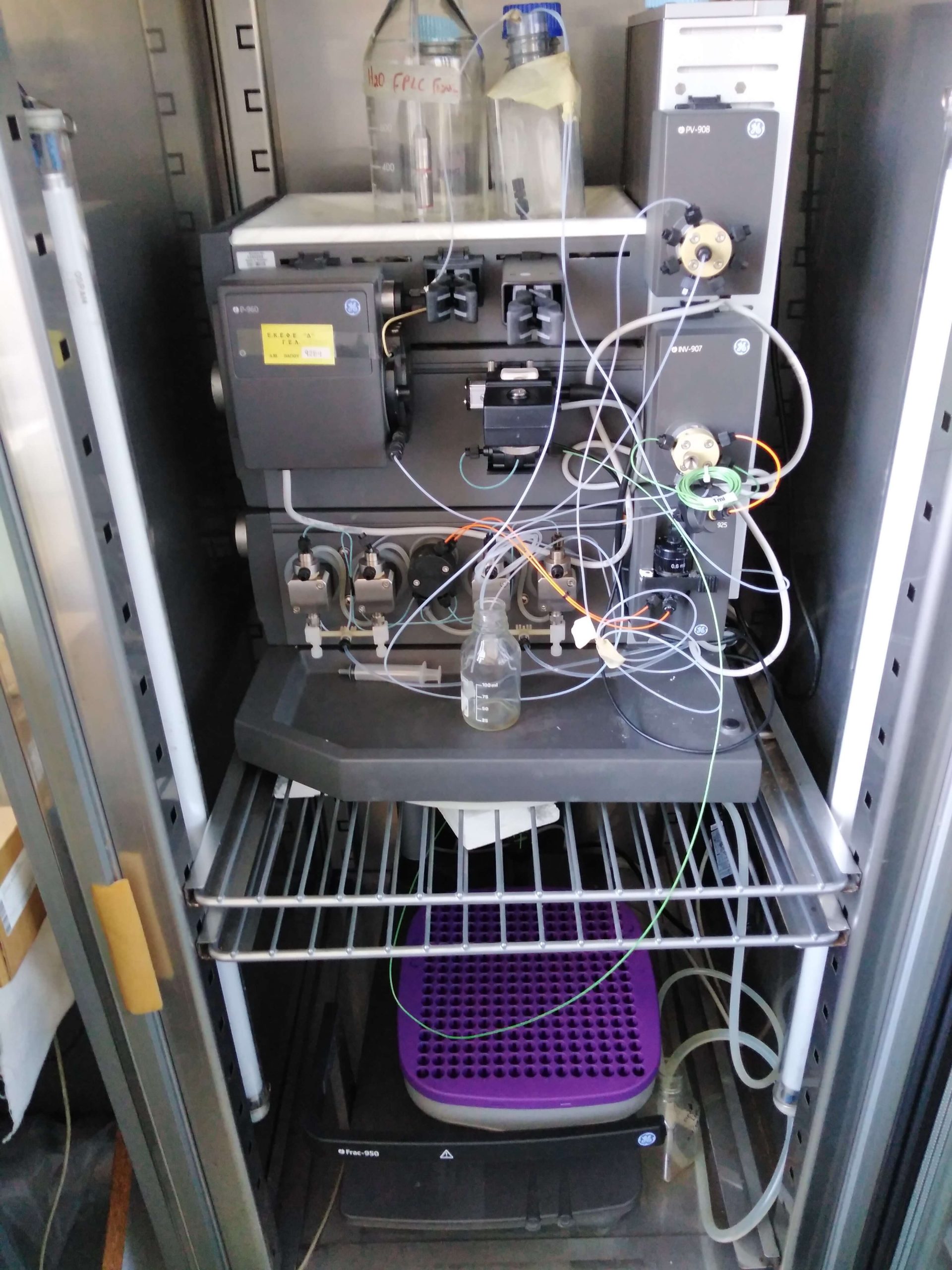
The Team
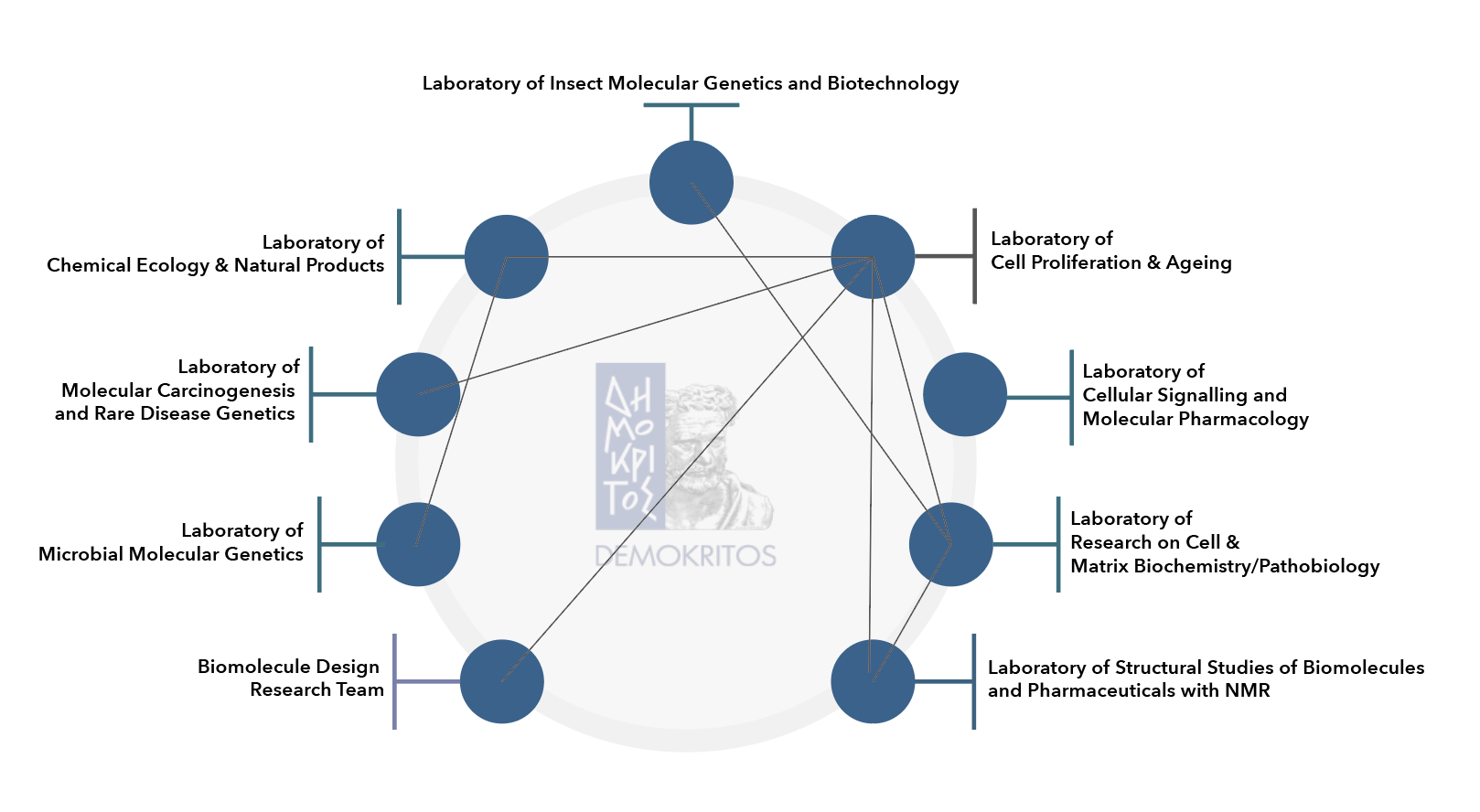
Where to find us
Location : Instutite of Biosciences & Applications, Patr. Gregoriou E & 27 Neapoleos Str, 15341 Agia Paraskevi, GREECE
Telephone : +30 210 650 3533
Email : openscreen@bio.demokritos.gr
